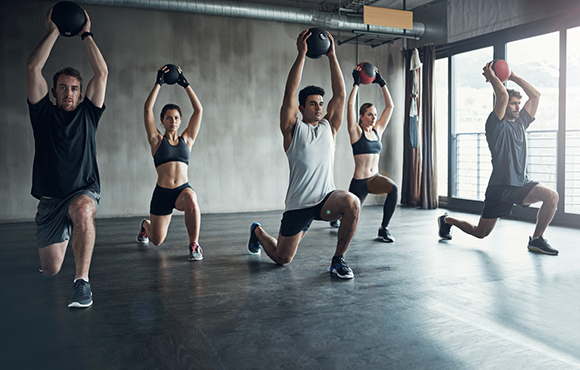Now that the season is over, it's important for every triathlete to identify weaknesses to improve in the year ahead.
Patrick Hagerman, author of Strength Training for Triathletes, suggests asking yourself these important questions before you get started:
- What was your weak point during the season?
- Were your legs getting tired early in the race?
- Were your arms exhausted after the bike?
Whatever your weak points are, the offseason is the time to address these issues to become a stronger, faster triathlete. Once you've analyzed how your body responded to the past year's training and racing, offseason strength workouts should be incorporated to address deficits and build your fitness base.
Use this as a guide to build a strength-training plan that's right for you.
Address Muscle Imbalances
1 of 6
Jen Rulon, a triathlon and strength coach in San Antonio, says most triathletes have muscle imbalances that can affect finishing times and the possibility of injury.
"Triathletes generally are stronger on the anterior side of their body such as the quadriceps and shoulders etc.," Rulon says. "It's important to get in the gym and balance out their body by working on the posterior chain."
While offseason strength-training programs should be tailored to individual strengths and weaknesses, three physiological aspects that every triathlete should focus on are strength, power and muscular endurance. By initiating workouts that address these three specific categories, you'll not only boost triathlon performance, you'll reduce your chances of injury.
Find:
Your Next TriathlonAbsolute Strength
2 of 6
Absolute strength is all about how much you can push, pull or lift. While it may not seem relevant to triathlon, Rulon points out that "scientific studies show that lifting heavier weight increases running efficiency."
Exercises such as leg press, chest press, dumbbell curls and hamstring curls should be included in your offseason routine. By focusing on the push, pull, and lift workouts in your regimen, you'll stress the body in ways sport-specific activities can't—and you'll be stronger for it.
"The whole idea of strength training is to introduce an overload that your body isn't used to," Hagerman says.
Incorporate these absolute strength exercises twice per week during the offseason to achieve optimal results.
Find:
Your Next TriathlonMuscular Power
3 of 6
Muscular power is a related skill that you should address in the weight room. This skill focuses on how much force your muscles can produce on command.
Advanced muscular strength may allow you to lift heavy things, but it might not necessarily make you faster up a hill or allow you to accelerate past a competitor. Since we recruit fast-twitch muscles, even during long events, it's important to stress those fibers as you prepare them for in-season competition.
Muscular power is built through compound exercises like the dumbbell single-arm snatch, box jumps or hanging clings, which require quick, explosive movements.
"Long distance athletes tend to do a lot of long slow distance work, which only utilizes the slow twitch muscle fibers," Rulon says. "Strength training with explosive exercises will tap into fast-twitch muscle fibers, which will help you get to the finish quicker."
Find:
Your Next TriathlonMuscular Endurance
4 of 6
While it might not seem like it, strength training does assist in building muscular endurance too—something you'll need come race day.
"You may need more muscular endurance in your shoulders for the bike, or more in your legs for the run, but there's no one size fits all approach," Hagerman says.
Rulon prescribes High Intensity Interval Training (HIIT) to boost muscular endurance. These sessions aimed to boost cardiovascular endurance and are customized to the athlete. A HIIT workout can include everything from sit-ups, to lunges, kettlebell swings or burpees, all in rapid succession with limited recovery between each set.
As a total-body strength workout, HIIT is designed to get your heart rate up to improve your endurance while you strength train.
Find:
Your Next TriathlonThings to Keep in Mind
5 of 6
While every athlete's off-season strength program will differ, you should always aim to work each of the three systems on a regular basis.
"It goes back to the idea of use it or lose it," Hagerman says. "After 72 hours, you'll begin to lose any increases in strength that you've built, so if you don't train at least every third day, you won't ever make much progress."
It's important to keep in mind that recovery is necessary, particularly between strength sessions that work the same muscle groups.
"You don't get stronger while you're training, you get stronger while resting," Hagerman says. "You have to take recovery time. Typically we say at least 24 hours in between, but sometimes 36 to 48 hours in necessary."
With next season's multisport performances just around the corner, success often comes down to how well you addressed strength, power and muscular endurance in the offseason. With a customized approach and a plan to learn from last year's downfalls, you'll set yourself up for your best racing season yet.







Discuss This Article